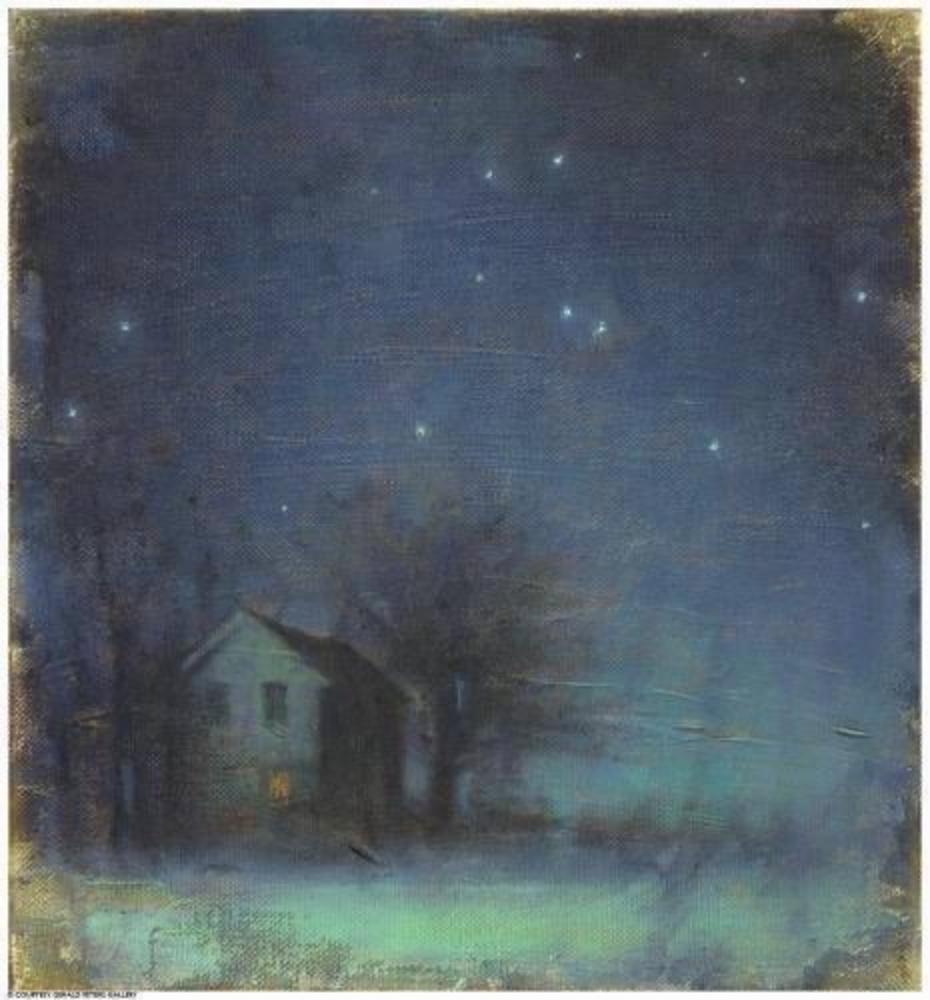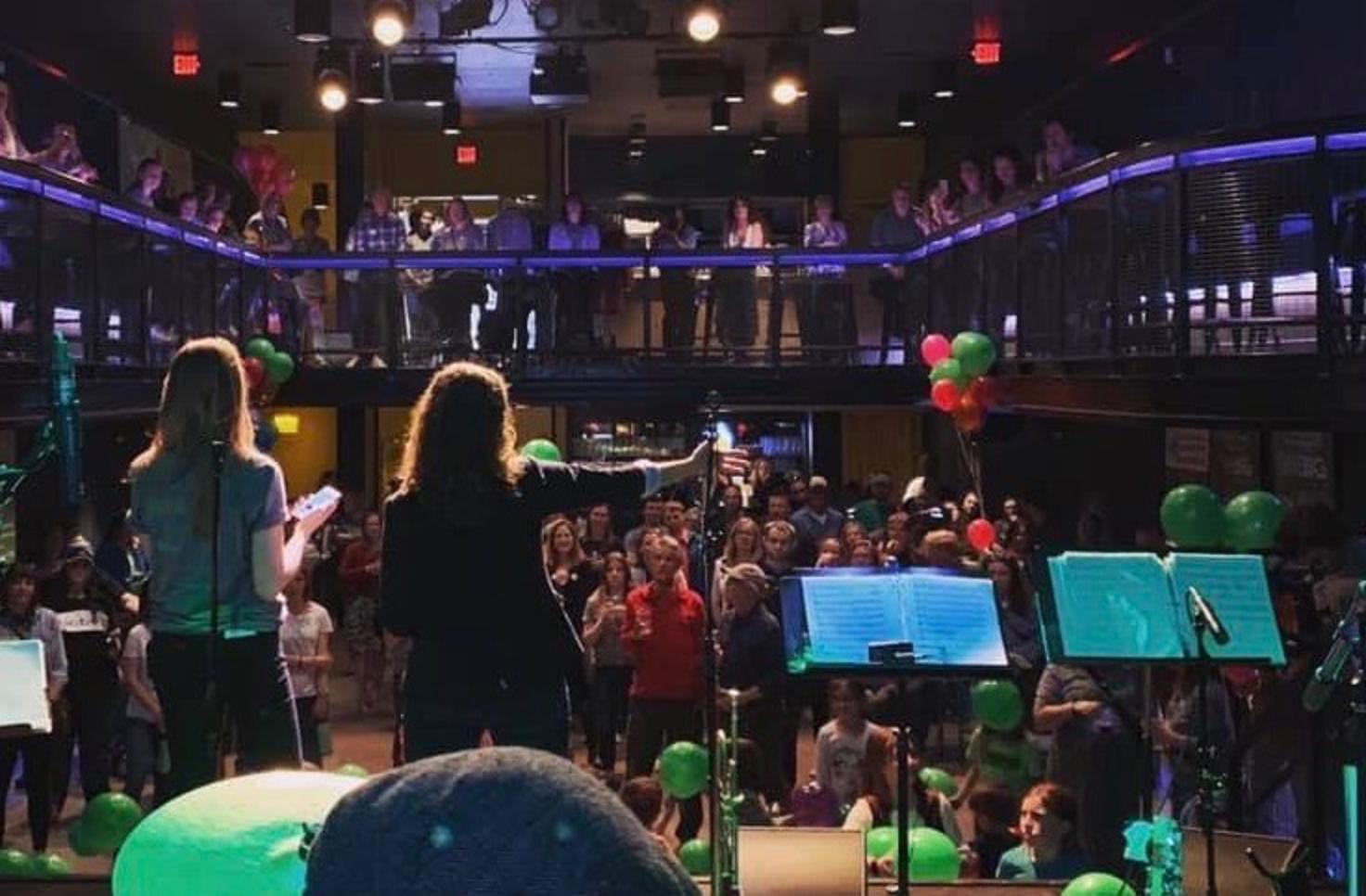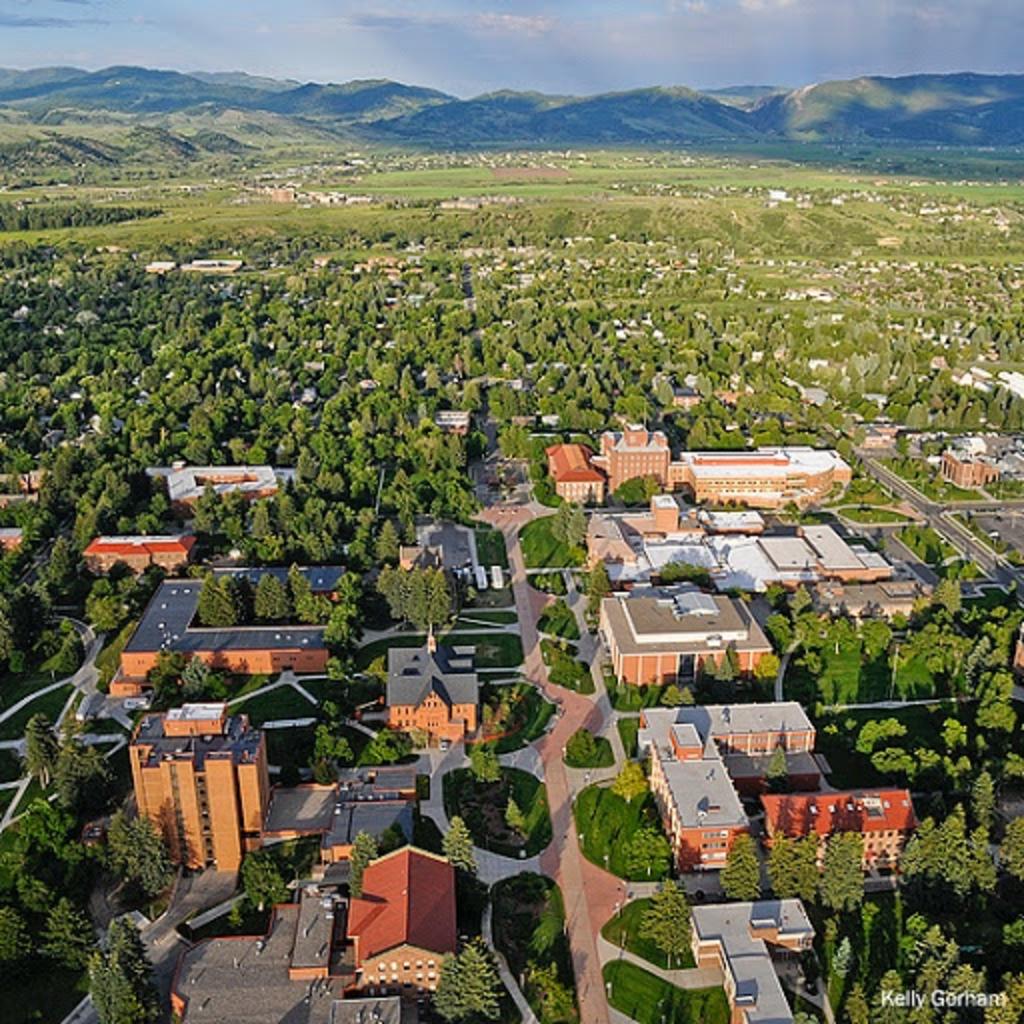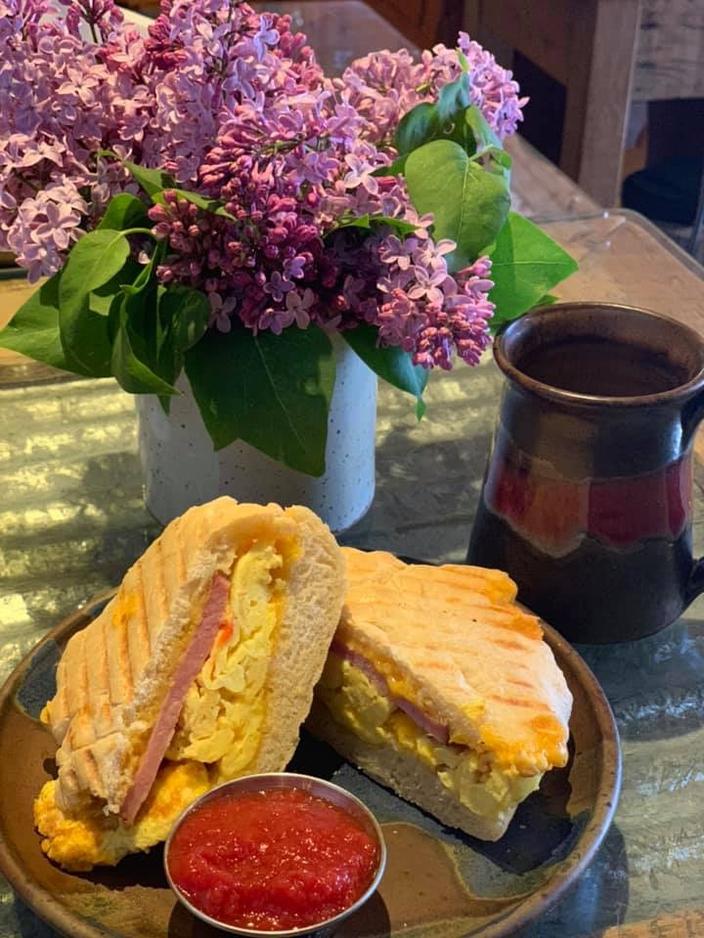Back to StoriesOur Communities Are Being Defined By How We Respond To Covid-19
April 23, 2020
Our Communities Are Being Defined By How We Respond To Covid-19 Give Big, the annual celebration of non-profits, arrives at a crucial moment when citizens are anxious to get out—and rally. We guarantee this interview with Bridget Wilkinson will open your heart
"No one need wait a single moment to improve the world." —Anne Frank
By Mountain Journal
Why here?
Why do we live here?
Why did we move here?
Why do we travel here?
Why do we stay here?
Why do we want to belong to the same place?
What is it about southwest Montana and the three-state Greater Yellowstone region that has gathered us together as a community of extraordinary shared interests?
Indeed, pause for a moment and think about what those interests are.
Often, we seldom have the time to reflect on such things.
If there’s been an opportunity to emerge from the Covid-19 pandemic—for many generations a once in a lifetime event—it is to really take stock of what's vitally important and what isn’t.
Give Big, southwest Montana’s annual and popular celebration of philanthropy sponsored by the Bozeman Area Community Foundation, arrives at a perfect moment for reflection. It’s really about the ethic of giving back to create and protect a better whole.
America is the richest and most generous country on Earth. Truly remarkable is that in addition to being a place where people want to be, the Greater Yellowstone region (see the stats mentioned in the interview below) is recognized nationally for having passionate citizens known for their generosity, be it time or money.
But here's something else: the non-profit sector of southwest Montana is a huge economic engine, providing jobs, revenue and good deeds that trickle throughout communities and arenow being viewed as crucial catalysts for helping to drive recovery.
This is the sixth annual Give Big Gallatin Valley initiative. In just five years, the one-day event has raised more than $4 million in unrestricted funding for our nonprofit community through 19,000 gifts during Give Big making it the largest giving day in the state of Montana.
For many, ranking high on the list of why-be-here-now at this place, at this moment in time, has to do with the natural environment that in the Lower 48 and most of the world is second to none. We pride ourselves on how much we cherish wildness; it matters to us in immeasurable, innumerable ways.
Almost everyone here is dealing with some kind of economic hardship and uncertainty. Give Big is a time to remember and rally around people most in need—the young and old, families, those who are hungry, seeking shelter and businesspeople pushed to the edge.
Mountain Journal, which was founded as a non-profit, reader-supported, public-interest journalism site, to be a voice for exploring the intersection between people and nature in our region, gets it.
We hope you consider that when Give Big kicks off Thursday April 30 and lasts for just 24 hours ending on Friday, May 1. We hope that you will consider how lucky we are in to live in communities like ours, as remarkable for their people as their spectacular landscapes. In character-defining times like this, we all pull together. We care about each other and the other creatures that share the panoramas with us.
Because of social-distancing guidelines still in place, Give Big will be held virtually.
“The nonprofit sector is the fabric of our community and needs us now more than ever,” said Bridget Wilkinson, Executive Director at the Community Foundation. If you have the capacity to give this year during Give Big, we encourage you to make a donation to a nonprofit that you love. We are focused on the simple joy of giving, not pressing for a dollar amount. Whether you can donate $10 or $100, you can make a big difference.”
During Give Big, community members go to one website www.GiveBigGV.org to find a cause, among 180 different non-profits, they care about and give big, she says. Due to the devastating effects of Covid-19, local nonprofits have increased their services, while also cancelling important fundraising events and needing to make tough decisions to furlough staff, reduce salaries and suspend income-generating programming.
Mountain Journal recently had the chance to visit with Wilkinson (no relation to MoJo founder Todd Wilkinson). Bridget is a dynamic leader who has been at the helm of the Bozeman Area Community Foundation for a few years. If you want to have a look under the
hood of why non-profit groups are important, you’ll learn much from Bridget’s insight.
“At the Bozeman Area Community Foundation we believe in the power of every person to make a positive impact in our community,” said Jenn Lammers, president of the Foundation’s board of directors. “Vibrant, strong communities don’t happen by accident. That’s why I’m personally asking everyone to Give Big.”
MOUNTAIN JOURNAL: The Bozeman Area Community Foundation, as a nexus for non-profits in southwest Montana, understands better than other entity the dynamic breadth of this human ecosystem. As we deal with Covid-19, what has stood out for you as far as the role they play?
BRIDGET WILKINSON: What has stood out to me is our nonprofit sector's ability to pivot so quickly to meet dynamic needs that are changing by the hour in many of our communities. Our nonprofit sector in Southwestern Montana plays a critical role in strengthening the social fabric of our region, from arts education to trails and conservation - from healthcare to theater, our nonprofits are central to what makes this place special. Over the past few weeks, we have seen organizations pivot their entire organizations to meet urgent and increasing needs in our community. From our domestic violence organization HAVEN complying with CDC regulations on social distancing by moving all of their advocacy support online and getting their clients into safe hotel spaces to our Montana Science Center printing masks with their 3D printers to our YMCA providing emergency childcare. Our nonprofits are demonstrating their value in spades right now and we are humbled by their innovation and grit.
MOJO: There is a lot of struggle and uncertainty challenging the ability of our region to be resilient. For readers who may not understand the depth of the strain, are there any examples you'd like to cite?
BRIDGET WILKINSON: Over the past few weeks, we have seen significant hardship in our region. From small, local businesses who have had to close their doors and layoff their staff to community members who are making hard choices between feeding their families and paying rent. The Covid-19 pandemic has exposed many inequities in our community.
The Bozeman Area Community Foundation, in partnership with our local Greater Gallatin United Way, launched a southwest Montana Covid-19 Response Fund to provide flexible resources to organizations working with individuals and populations disproportionately impacted by coronavirus and the health and economic consequences of this outbreak.
The funding requests from organizations have been heart-wrenching. For an economy so heavily reliant on tourism, we have many service industry workers who don't have the opportunity of working from home.
With schools closed, there are many single parents who are struggling to care for children and simply need a gas card and diapers. There are many survivors of domestic violence who are quarantined at home with their abusers. Elderly community members are lonely and their Meals-on-Wheels deliveries have been reduced, meaning that they will go days without seeing another friendly face. Many parents are being asked to pay for childcare to keep their children's spot in much-needed day care while their day care facility is closed. The needs are endless and we anticipate them to grow over the next several months.
MOJO: What is notable about Give Big in 2020?
BRIDGET WILKINSON: Give Big will look different in 2020. Although social distancing means our community will not be able to gather at the traditional Donor Lounges or the Finale Party to celebrate in-person, the community will still come together online, through live streams, and in spirit to celebrate. Everyone will be able to follow along online to see how their favorite nonprofits are doing throughout the day and watch the community come together. Cash prizes and matching funds for nonprofits will add to your donations and help each gift go further.
MOJO: In terms of numbers that illustrate the growth and impact of Give Big, what stand out for you?
BRIDGET WILKINSON: During our first year of Give Big, we were hoping to raise $100,000 for 100 nonprofits in 24-hours. By noon that day, we had hit our goal and went on to raise over $237,000 to nonprofits. From there, we've been overwhelmed at the outpouring of support for local nonprofits through Give Big.
We’re proud of the growth we’ve seen in the number of donors participating in Give Big Gallatin Valley, growing 68 percent from 2015 to 2019. Additionally, we have increased giving by 485 percent in just five years, reaching $1.4 million last year, and making our giving day the largest in the state.
Nationally, for other community foundations hosting giving days our size, they have an average of 400 nonprofits participating. What is most remarkable about this increase in giving is that the average number of organizations registered for other large giving days (raising $1,000,000+), is 400. That means our community shows up in a big way for the 200 nonprofits participating in our day compared to others nationally.
Also more of our nonprofits that register actually raise funds during Give Big than the national average (last year it was 100 percent) and nationally, it’s between 83-89% that actually raise funds. Total match dollars for large giving days nationally is $177,457 but last year our giving day had $326,800 in matching funds! We're proud of our community for stepping up and supporting our organizations through Give Big, year after year. This year, due to Covid-19, that support will be more critical than ever.
MOJO: You've been at the helm of the organization for a few years. What have you learned about the community of NGOs in southwest Montana that you didn't when you started?
BRIDGET WILKINSON: Since taking this leadership role at the Community Foundation, I have learned that much of what we love about southwestern Montana is a direct result of tireless nonprofits who do critical work behind-the-scenes to make this place so special.
I have been surprised at how often nonprofits are overlooked as economic drivers in our state who provide critical programming and support for our communities without a lot of fanfare.
According to the Montana Nonprofit Association, Montana’s charitable nonprofits generate nearly $8.9 billion in income each year which is returned to communities through mission-driven work.
The total economic impact of our nonprofit sector in Gallatin County is $928,642,763—nearly $1 billion— with 250 nonprofits that are employing 4,456 employees. Throughout the state of Montana, our nonprofit organizations employ 11.2 percent of the state’s total workforce and paid $2.2 billion in total wages in 2017. That's incredible.
"I have been surprised at how often nonprofits are overlooked as economic drivers in our state who provide critical programming and support for our communities without a lot of fanfare. According to the Montana Nonprofit Association, Montana’s charitable nonprofits generate nearly $8.9 billion in income each year which is returned to communities through mission-driven work." —Bridget Wilkinson
MOJO: You say many different kinds of things define community.
BRIDGET WILKINSON: When we think about what makes our communities special, it is easy to take for granted the beautifully maintained trails and recreation areas, the innovative health care systems, the rich educational opportunities including public-interest journalism that leaves us better informed about this place we love, and the free art and musical experiences that we get to enjoy, to name a few. The reasons why we love this place—and why it's growing so quickly—is due in large part to the hardworking nonprofit sector who rarely receives the credit they are due for their work.
People are moving here for the quality of life that many nonprofits are providing each day. That is why initiatives like Give Big are so important in order to celebrate our nonprofit community, who are the unsung heroes, and to educate our community about their collective impact.
MOJO: It's often said that economic prosperity lifts all boats but we know there remains inequity. How does philanthropy lift up a community?
BRIDGET WILKINSON: At the Bozeman Area Community Foundation, we believe in the power of every person to make a positive impact in our community because vibrant, strong communities don’t happen by accident. These types of communities exist when each of us have a seat at the table to use our voice and are given power to create change in our neighborhoods.
We have been exploring how our model of community philanthropy can help redistribute power and resources, two tools which help reverse the systems that perpetuate inequity. Community philanthropy is based on the idea that all communities have their own assets such as financial resources, knowledge and networks.
MOJO: So you see philanthropy as an empowering force for making out communities more diverse, more resilient in the long run and even more democratic?
BRIDGET WILKINSON: When these assets are brought together and pooled, they build community power and voice. When people feel they have something at stake, they care more about the outcomes, and evidence shows that they become more invested in acting in ways that advance and protect their collective interests. Through initiatives like Give Big, we are democratizing philanthropy and protecting collective interests by pooling our community's resources to redistribute to organizations that are advocating for many community members without a voice. Together, our $10 donations can mean a lot more collectively than alone. We know that people invest in what they help create and we're working to make a bigger table for everyone to sit at to address the inequity we see around us.
MOJO: How are the community issues different in Bozeman than in smaller towns and more outlying areas?
BRIDGET WILKINSON: While some urban areas in Montana like Bozeman are benefitting from significant growth and thriving economies, many smaller and more rural communities outside of the City of Bozeman don't always see the economic benefit of their urban neighbors.
While some outlying communities face challenges like access to healthcare for their aging populations and recruiting and retaining a young workforce, there are some similar challenges that rural and urban communities are facing throughout Montana, such as housing.
While the City of Bozeman is wrestling with affordable and attainable housing options, there are many rural communities that are also trying to recruit a workforce with a small housing inventory.
For example, there are communities that are trying to recruit and retain teachers in their rural schools but do not have housing to keep these teachers. So, while the issue of housing looks different for the City of Bozeman, issues like housing are shared throughout our region—they just look different.
"When we think about what makes our communities special, it is easy to take for granted the beautifully maintained trails and recreation areas, the innovative health care systems, the rich educational opportunities including public-interest journalism that leaves us better informed about this place we love, and the free art and musical experiences that we get to enjoy." —Bridget Wilkinson
MOJO: In the three years we've been around, Mountain Journal has tried to create a range of conduits for bringing people together—our free online site, social media and staging public events as ways for people to gather and share ideas about how to protect this region. Many people have told us they feel isolated in these times and are searching for ways to stay connected. In a Ted Talk you address "the health epidemic of chronic loneliness." What is it?
BRIDGET WILKINSON: Due to Covid-19, many of us have experienced significant loneliness due to quarantine and social distancing. Chronic loneliness can have physiological effects that actually accelerates the aging process. Loneliness adversely impacts stress hormones, immune function and cardiovascular function.
According to the leading researcher on loneliness, John Cacioppo, the feeling of loneliness is actually a fight or flight response in our bodies. When our body is thirsty, it tells us to drink. When we are hungry, our body tells us to eat. When we need social interaction, we start to feel this negative emotion of loneliness. Loneliness is our body telling us that we can’t stray too far from the herd that’s protecting us. While this feeling of loneliness used to be an alert system to prevent us from getting eaten by lions outside of our tribe – loneliness can still kill us. It’s just a slower, more invisible process. When we don’t address our own loneliness in a healthy way, it can actually have negative health effects on our bodies.
MOJO: Do you think that a dollar given this year has more impact now and what does charity in a time of crisis say about a community?
BRIDGET WILKINSON: From the stock market volatility to the new social isolation norms, there is no denying that the Covid-19 coronavirus has changed our lives and will have lasting impacts on our community. We know that uncertain times like these can be extraordinarily challenging for our community—and the nonprofits that support it. While it may feel overwhelming and lonely, none of us are alone.
Our region is full of people who care deeply about this place and our neighbors and we have already seen remarkable acts of kindness and compassion throughout the Gallatin Valley as community members step up to address the challenges facing at risk populations, neighborhoods, schools, nonprofits, businesses and faith communities.
BACF is committed to continuing the work of thinking, planning, and acting local, to empower our community’s greatest resource: our people.
In conjunction with a number of state and local organizations and government agencies, we are working on a strategy and a response to the increased need for social safety net services. We know that the front line social service organizations in our area are going to need unprecedented levels of support. BACF and our partners are committed to helping these essential organizations marshal the resources needed to meet the immediate and ongoing needs.
MOJO: Some have likened NGOs to a community support network like that of first responders.
BRIDGET WILKINSON: Across the region, nonprofits have been on the frontline of the COVID-19 response and have seen a surge in demand for their services in recent weeks, and we know that this is the tip of the iceberg. In the coming months, many organizations will be facing increased demand for food resources, medical services and addressing an increase in domestic violence, to name a few.
Many of these organizations in our region are understaffed and under-resourced and need our support, now. I'm amazed at the creativity, ingenuity and compassion our nonprofits are showing right now with limited resources. This sector can bridge many gaps that our private and government sectors cannot. Some nonprofits fail to focus on their own operations and staff because they lack the funding, time, and resources to ever get to it. This leaves our important sector vulnerable in times like these.
This pandemic is showing us that nonprofits are the critical lifeblood of our communities and they need unrestricted support to strengthen their operations and staffing to get important work done right now. This new time requires our community to support our nonprofits in unprecedented ways, including providing them unrestricted funding and trusting them to allocate those resources to the highest and best use to meet needs, now.
We live in a region that was built on resiliency, grit, perseverance and the support of your neighbor. That long history continues to be demonstrated today in powerful ways through our nonprofit sector.
MOJO: The social events centered around Give Big have been a huge part of the community spirit that gets expressed. When we reach the other side of this, are there any plans for coming together and celebrating not only Give Big but how we confronted and prevailed over the adversity together?
BRIDGET WILKINSON: Yes! So glad you asked. We are still finalizing details on this, but we are planning to launch another A Seat at the Table initiative this fall. While this conversation will be focused on housing, the top concern that was identified in our first initiative in 2018, we anticipate that this will be an important time for our community to come together to explore this unprecedented point in time and how we prevailed through it.
No Matter How Much You Give Back, Every Bit Adds Up
Five Easy Ways
With the pandemic having impacts on our neighbors, local businesses, and families, many community members may want to get involved in Give Big this year but are not able to do so financially like they have in the past. However, there are multiple ways to get involved during Give Big Gallatin Valley April 30 and May 1:
1. Donate at Give Big to a cause you care about.
2. Help an organization you support by being a Peer-to-Peer Fundraiser for them. Learn how at www.GiveBigGV.org.
3. Find a volunteer opportunity on your favorite organization's profile at www.GiveBigGV.org.
4. Help spread the word—share the initiative with your community!
5. Share Give Big or news about a cause you care about on social media. By doing so, you could help a nonprofit you love win the “Newsworthy” or “Star Donor” cash prize. You can find out other ways to get involved by going to www.GiveBigGV.org, following the Bozeman Area Community Foundation on its social media platforms, or contacting Bridget Wilkinson at 406-587-6262 or bridget@bozemanfoundation.org.







